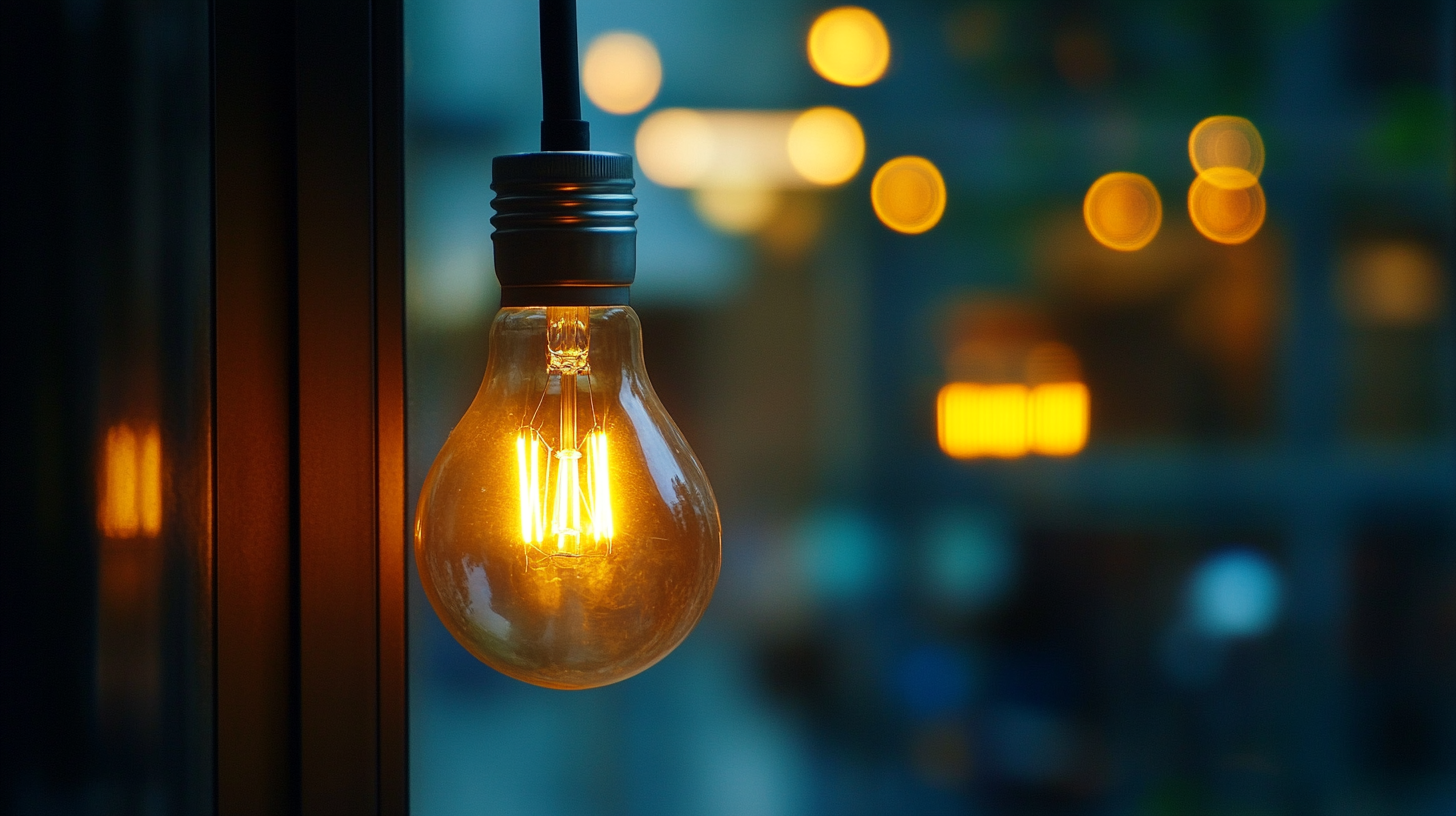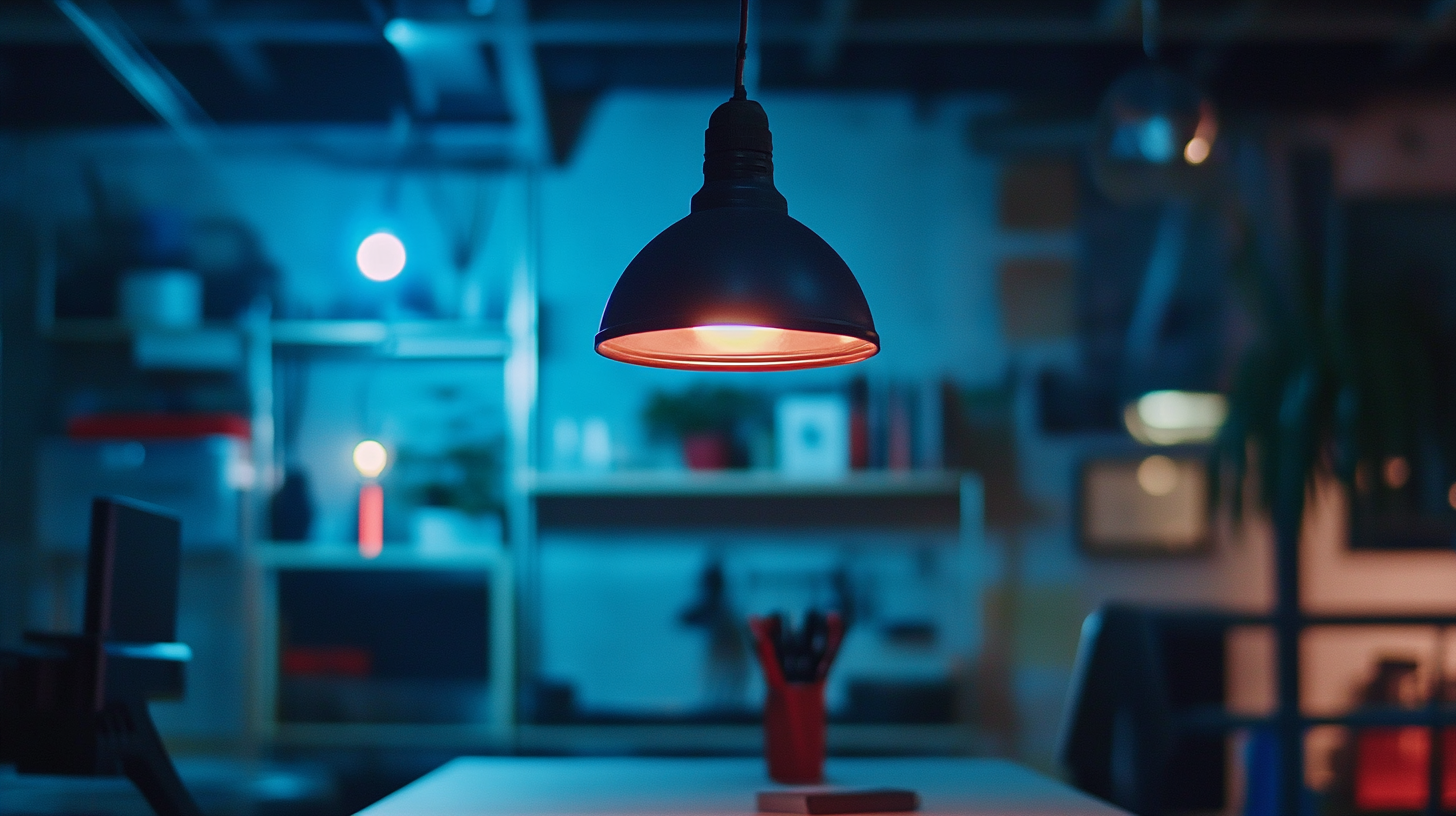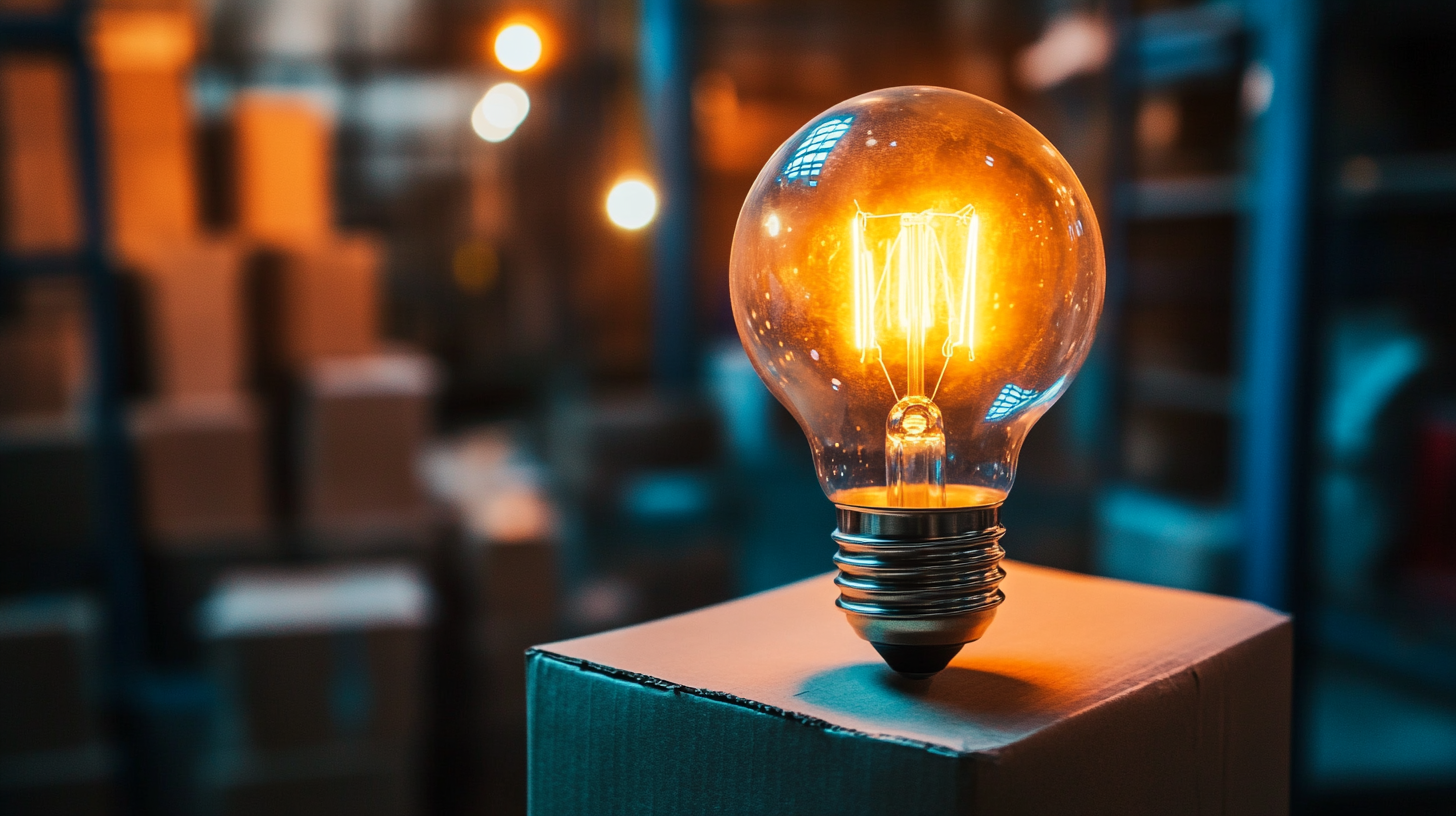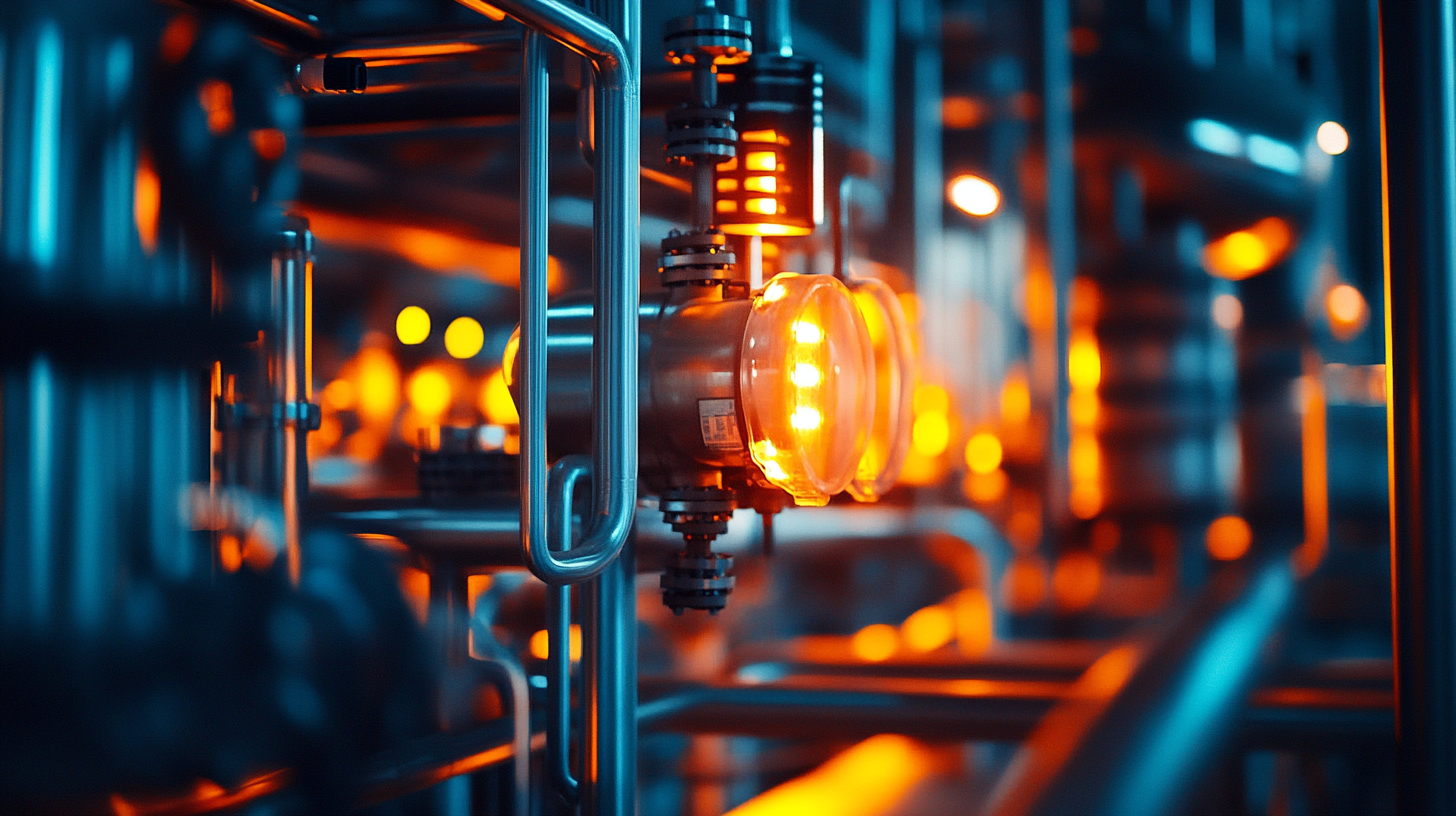
In recent years, the adoption of Industrial Led Lighting has gained significant momentum as businesses across various sectors strive for greater energy efficiency and operational effectiveness. According to a report by the U.S. Department of Energy, LED lighting can reduce energy consumption by up to 75% compared to traditional incandescent lighting while lasting 25 times longer. This remarkable longevity and efficiency translate not only into reduced energy costs but also lower maintenance expenses, making Industrial Led Lighting an attractive investment for modern enterprises.
Moreover, the enhanced quality of light provided by LEDs supports improved productivity and safety within industrial environments. A study conducted by the Lighting Research Center indicates that better lighting can lead to a 20% increase in worker performance and decreased accident rates in warehouses and manufacturing plants. By choosing Industrial Led Lighting, businesses can create a more conducive work environment while contributing to sustainability goals. As companies look to streamline operations and minimize their environmental footprint, the advantages of switching to LED technology become increasingly clear.

Choosing industrial LED lighting for your business can lead to substantial savings on utility costs, primarily due to its remarkable energy efficiency. Traditional lighting options, such as incandescent and fluorescent bulbs, consume significantly more energy and have shorter lifespans. In contrast, industrial LEDs use up to 75% less energy, allowing businesses to reduce their electricity bills considerably. This is especially beneficial for large facilities that require extensive lighting, where the savings can accumulate over time, freeing up capital for other operational expenses. Moreover, the long lifespan of LED lights, often exceeding 50,000 hours, minimizes the need for frequent replacements. This longevity not only contributes to lower maintenance costs but also decreases labor expenses associated with changing bulbs. By investing in industrial LED lighting, businesses can ensure consistent and reliable illumination without the constant interruptions and costs of upgrading less efficient lighting solutions. Additionally, energy-efficient LED systems can enhance productivity. Better lighting conditions can lead to improved employee morale and operational efficiency. As workers operate in well-lit environments, they can perform tasks more effectively, potentially boosting overall output. This combination of reduced costs and increased productivity makes industrial LED lighting an invaluable choice for any business aiming to optimize its expenses and enhance the workplace atmosphere.

The impact of LED lighting on employee performance is a focal point for businesses aiming to enhance productivity. Research indicates that appropriate lighting significantly influences mood, energy levels, and overall job satisfaction. According to a study by the Pacific Northwest National Laboratory, workers in environments with optimal lighting—such as LED systems—showed a 20% improvement in productivity compared to traditional fluorescent lighting.
LED lighting not only provides better brightness and clarity but also reduces eye strain, which can be a major factor in workplace fatigue. A report from the American Society of Interior Designers found that 68% of employees cite poor lighting conditions as a contributing factor to decreased productivity and increased discomfort. By replacing inefficient lighting systems with LEDs, businesses can ensure their employees operate in a more comfortable and visually ergonomic environment.
Moreover, LED technology offers a unique spectrum of light that can enhance concentration and focus. The Human Centric Lighting approach, highlighted in a report by the International Energy Agency, suggests that tailored lighting solutions can improve alertness among employees by up to 30%. This data underscores the importance of investing in LED lighting—not only for energy efficiency but also for optimizing employee performance and well-being within the workspace.

When it comes to selecting lighting solutions for industrial settings, durability and longevity are paramount. Industrial LED lighting significantly outperforms traditional lighting options like incandescent and fluorescent bulbs, which come with a host of issues, including frequent replacements and increased maintenance costs. According to a report by the Department of Energy (DOE), LED technology can last up to 25 times longer than conventional lighting, translating to a lifespan of approximately 50,000 hours compared to just 2,000-15,000 hours for older technologies.
One of the most compelling reasons to choose industrial LEDs is their robust construction. Unlike fragile glass components found in traditional bulbs, industrial LEDs are encased in durable materials that can withstand harsh conditions and environments. A study published by the Illuminating Engineering Society (IES) indicates that industrial LEDs are not only resistant to shocks and vibrations but also perform well under extreme temperatures. This makes them an excellent choice for warehouses, manufacturing plants, and outdoor facilities where resilience is crucial.
Moreover, the economic benefits of LEDs extend beyond their lifespan. A comprehensive analysis by the Energy Saving Trust revealed that businesses can save up to 75% on energy costs by switching to LED lighting. The combination of low energy consumption and minimal maintenance further emphasizes that choosing industrial LEDs is a financially sound decision. With longer operational hours and reduced frequency of replacements, businesses can allocate their resources more effectively, integrating savings into further productivity enhancements.

Industrial LED lighting is an increasingly popular choice for businesses looking to reduce their carbon footprint and enhance their sustainability efforts. By opting for energy-efficient LED solutions, companies can significantly lower their energy consumption, cutting electricity costs by up to 50% compared to traditional incandescent or fluorescent lighting. This shift not only benefits the bottom line but also contributes to a broader commitment to environmental sustainability, a factor that has become vital in today’s corporate landscape.
Organizations across various sectors are actively seeking ways to address their environmental impact. The fashion industry, for example, faces mounting pressure to mitigate pollution and reduce carbon emissions, necessitating innovative approaches that include more efficient lighting. Implementing industrial LED lighting is a key part of this strategy, as it not only reduces energy usage but also minimizes the carbon footprint associated with production and distribution. In fact, moving to LED solutions can lead to a reduction of up to 30% in greenhouse gas emissions from lighting alone, showcasing a substantial opportunity for businesses to align with green supply chain initiatives.
Moreover, businesses that embrace sustainability through solutions like LED lighting often find themselves driving growth and innovation. With consumers becoming increasingly aware of environmental challenges and the importance of sustainability, companies can leverage this trend to enhance their brand reputation. A study indicates that nearly 75% of consumers want brands to be eco-friendly, reinforcing the notion that sustainable practices are no longer optional but essential for success in today’s market. As such, companies setting ambitious goals for reducing their carbon footprints will find that industrial LED lighting isn’t just a smart choice for energy savings; it’s also a commitment to a more sustainable future.
In today's fast-paced industrial landscape, the versatility of LED lighting has made it an essential component for businesses looking to enhance their operational efficiency. Industrial LED lighting can be tailored to meet specific needs, allowing it to be integrated seamlessly across various applications. From warehouses to manufacturing facilities, the customizability of LED fixtures enables businesses to optimize lighting for different tasks, ensuring that safety and productivity are maximized.
The introduction of innovative designs, such as the EVIYOS™ Shape, exemplifies how industrial LED lighting can adapt to the changing demands of modern industries. These advanced solutions not only provide superior illumination but also promote safety by reducing glare and enhancing visibility in critical areas. As businesses seek to unlock new horizons and improve their working environments, the adoption of tailored LED lighting solutions becomes increasingly relevant.
Additionally, as industries like horticulture continue to grow, the importance of specialized lighting solutions is further underscored. The projected expansion of markets, such as the horticulture lighting sector, showcases the demand for efficient lighting systems that cater to specific growing needs. This evolution underlines the need for businesses to consider the benefits of versatile industrial LED lighting, ensuring they remain competitive and responsive to market dynamics.
Let us help you get started with our superior LED lighting products.
Get all the latest news from BrightLED.
Copyright © Bright LED. All rights reserved.
STAY CONNECTED

